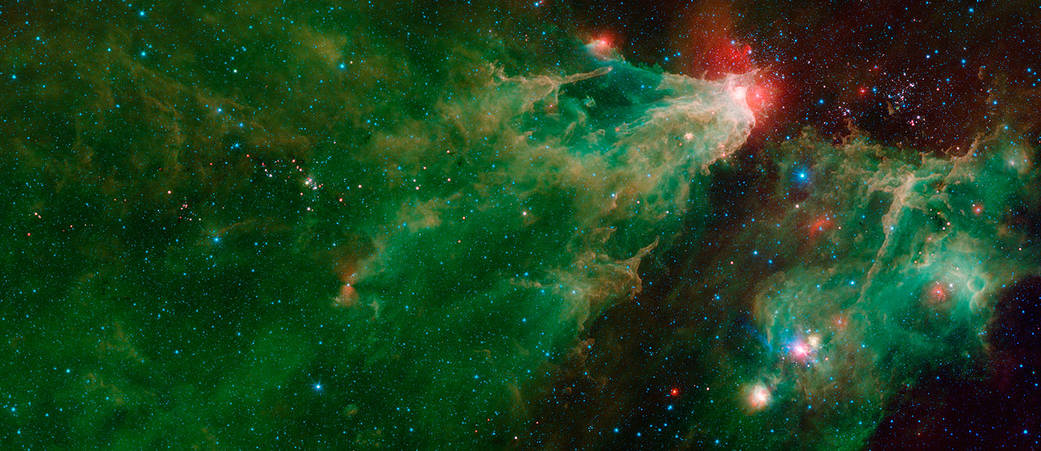The Cosmos with Cepheus C and Cepheus B
In this large celestial mosaic taken by NASA’s Spitzer Space Telescope and published in 2019, there’s a lot to see, including multiple clusters of stars born from the same dense clumps of gas and dust. Some of these clusters are older than others and more evolved, making this a generational stellar portrait. This image is of the Cepheus C and Cepheus B regions and combines data from Spitzer’s IRAC and MIPS instruments.
The grand green-and-orange delta filling most of the image is a faraway nebula, or a cloud of gas and dust in space. Though the cloud may appear to flow from the bright white spot at its tip, it is actually what remains of a much larger cloud that has been carved away by radiation from stars. The bright region is illuminated by massive stars, belonging to a cluster that extends above the white spot. The white color is the combination of four colors (blue, green, orange and red), each representing a different wavelength of infrared light, which is invisible to human eyes. Dust that has been heated by the stars’ radiation creates the surrounding red glow.
